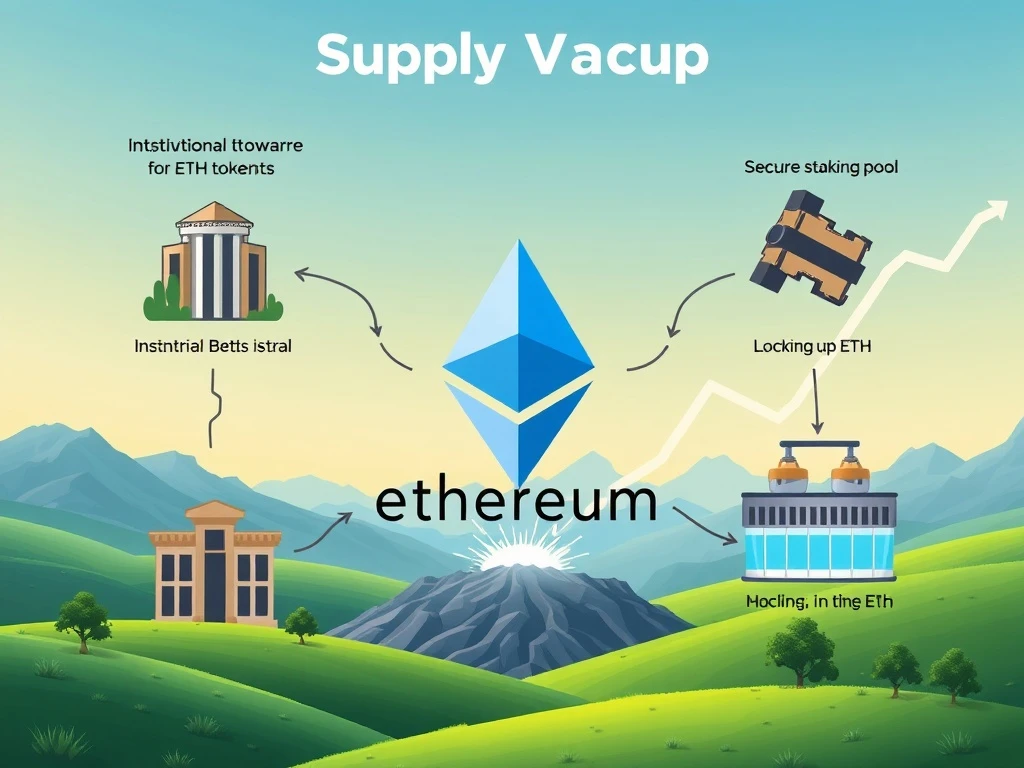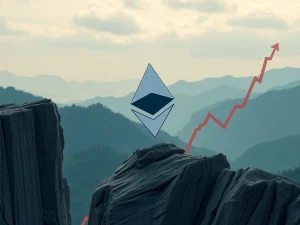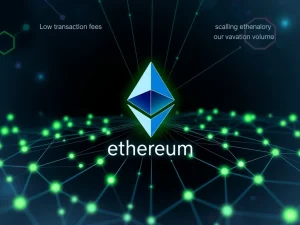Ethereum Price: Why ETH is Poised for an Explosive Surge

The cryptocurrency market often experiences periods of rapid growth. Currently, Ethereum (ETH) stands at the precipice of what some analysts predict will be an “explosive” price surge. This potential rally stems from a unique confluence of factors. These elements are creating an unprecedented scarcity in the ETH supply. Experts point to three active “supply vacuums” that are dramatically reducing the amount of Ether available on the open market. This dynamic could propel the Ethereum price to new highs.
Unprecedented Scarcity: Three Key Factors Driving ETH Supply Down
Analyst “Crypto Gucci” recently highlighted a significant market shift. They noted that Ethereum has never before encountered a market cycle with all three crucial “supply vacuums” operating simultaneously. This situation is fundamentally altering the supply-demand balance for Ether. Consequently, a shrinking ETH supply meets escalating interest. This creates a powerful upward pressure on the Ethereum price. Let’s examine these three pivotal factors.
Institutional Demand and Digital Asset Treasuries
One major new development in this cycle involves Digital Asset Treasuries (DATs). These entities did not exist during Ethereum’s last market boom. Over the past few months, DATs have aggressively accumulated substantial amounts of Ether. Specifically, they have amassed a staggering 5.9 million ETH. This holding is currently valued at approximately $24 billion. It represents about 4.9% of the total circulating supply. DATs typically acquire and hold assets for long-term yields. This strategy removes a significant portion of Ether from active trading. Therefore, it contributes directly to the overall scarcity.
The Impact of Spot Ether ETFs on Supply
Another powerful new force in the market is the emergence of Spot Ether ETFs. Like DATs, these exchange-traded funds were entirely absent in previous market cycles. Today, US-based ETFs have already acquired a substantial 6.84 million Ether (ETH). This amount is worth around $28 billion. It accounts for 5.6% of the total supply. This accumulation has occurred despite staking not yet being approved for these funds. The introduction of these regulated investment vehicles provides traditional investors with easier access to Ether. Consequently, it fuels further institutional demand and reduces the liquid ETH supply.
DATs and ETFs have been hoovering up ETH at record rates this year. Source: StrategicEthReserveEthereum Staking: A Major Supply Lock-Up
While Ethereum staking existed in its early stages during the last market cycle, its scale today is vastly different. Currently, a remarkable 35.7 million ETH is staked. This substantial amount is valued at approximately $146 billion. It represents almost 30% of the entire Ether supply. Much of this staked Ether is illiquid. This illiquidity is due to the lengthy exit queue, which presently stands at about 40 days. Staking rewards participants for securing the network. However, it also effectively removes a massive portion of Ether from immediate circulation. This further tightens the ETH supply.
Why Institutional Demand Drives the Ethereum Price “Nuclear”
Crypto Gucci emphasizes that Ether enters this market cycle with record institutional demand. Simultaneously, it faces the smallest liquid float in its history. A liquid float refers to the readily available supply for trading. When strong demand meets such a dramatically shrinking supply, the price reaction is often dramatic. “When demand meets a shrinking supply like this, price doesn’t just go up, it goes nuclear,” stated Crypto Gucci. Entrepreneur Ted Pillows echoed this sentiment. He predicted a fair value of $8,000 to $10,000 for ETH this cycle. He believes that institutional bidding and eventual ETF staking approval will lead to a hard rally.
Understanding Ether’s Supply Dynamics and Future Potential
The ETH supply currently experiences marginal inflation. It has only increased by 0.5% since the Merge in 2022. The Merge transitioned Ethereum from proof-of-work to proof-of-stake. In contrast, Bitcoin (BTC) supply increased by 4% over the same period. This comparison highlights Ethereum’s increasingly deflationary potential. A lower inflation rate contributes to scarcity. This further supports a higher Ethereum price.
The Nation-State Factor: A Potential Fourth Supply Vacuum
A potential fourth supply vacuum could emerge if nation-states begin stockpiling Ether. They might include it in their crypto strategic reserves. This week, the Kingdom of Bhutan announced plans to build on Ethereum. They are integrating their national ID system onto the blockchain. However, Bhutan does not currently hold any ETH. Ryan Sean Adams from Bankless commented on this development. He stated, “It’s awesome that Bhutan is building on Ethereum.” Yet, he added a crucial point. “But if Ethereum can’t convert building on Ethereum to holding ETH as a store of value, it’ll never live up to its cypherpunk dreams.” This highlights the importance of ETH being adopted as a reserve asset. Such adoption would dramatically increase institutional demand from sovereign entities. This would further tighten the ETH supply and boost the Ethereum price.
Conclusion: A Bullish Outlook for Ethereum’s Future
The convergence of these powerful forces paints a compelling picture for Ethereum. Active Digital Asset Treasuries, the advent of Spot Ether ETFs, and robust Ethereum staking are collectively draining the liquid supply of ETH. This unprecedented scarcity, coupled with burgeoning institutional demand, positions Ether for significant price appreciation. The market is witnessing a unique alignment of factors. These factors could indeed send the Ethereum price on an explosive trajectory. Investors and enthusiasts are watching closely as these dynamics unfold.









